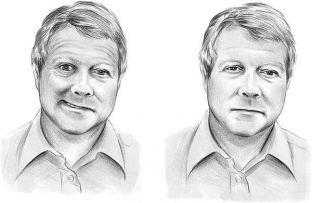What does the average person know about a stroke? A little, that's for sure. That a stroke is a hemorrhage in the brain, accompanied by paralysis of one side, deterioration of vision and consciousness. Often such misconceptions can mislead a person who has had a stroke or is at risk.
Debunk some myths about stroke. The consequences after a stroke can be very different, but it is possible to restore some brain functions if you work long and hard.
First Myth – A stroke is a hemorrhage in the brain
In fact, cerebral hemorrhage occurs only in a single case and is called a hemorrhagic stroke. A larger percentage of causes is assigned to ischemic stroke, which leads to disability and is difficult to cure. Ischemic stroke occurs due to the formation of a blood clot at the site of atherosclerotic plaque destruction. The clot blocks the access for the functioning of the blood and cuts off the nutrition of the brain, as a result of which a significant part of the brain cells die due to lack of oxygen. If patients have atrial fibrillation, the chances of having a stroke are doubled.
The second myth – A stroke can happen if a person has disorders of the cardiovascular system
Stroke does not always happen in people who suffer from heart disease. Of course, such cases are possible when a stroke is a natural consequence of the development of coronary heart disease or hypertension. Diabetes is also a huge risk. Or a stroke can happen after a transient ischemic attack, while being a healthy person. It is recommended that after passing the mark of 40 years, people constantly monitor blood pressure, cholesterol levels, and control weight.
Third myth – Sex is not allowed after suffering a stroke
A stroke cannot be completely the reason that forbids having sex after a complete recovery. If the attending physician gives the conclusion that the sexual act will not harm health, then a comfortable place, with a constant partner and at normal air temperature – those conditions that should be considered before taking such a step. It is necessary to exclude risk factors that can lead to stress and a strong load on the heart: a new partner, incomplete recovery, unusual environment.
The fourth myth – Stroke treatment is possible at home: pills, injections and consequences after a stroke do not threaten
We are accustomed to treatment at home, to take a pill, lie down and everything will pass. But the stroke – not this case, just lie down will not work. The consequences after a stroke can be fatal, so it is necessary to be treated in a hospital, under the supervision of doctors. At the first symptoms of a stroke (loss of consciousness, the ability to understand, see, speak, nausea, partial paralysis, numbness), you should immediately call an ambulance to send the patient to the hospital.
The Fifth Myth – It is necessary to follow a strict diet while taking anticoagulants
Previously, doctors could only use one anticoagulant – vitamin K antagonist, which required constant monitoring of blood clotting, it was necessary to individually select and calculate the dose, and adhere to the strictest diet. It was impossible to eat eggs, cabbage, green vegetables, green tea, raspberries, and other foods that contain vitamin K. With the advent of new generation anticoagulants – thrombin inhibitor drugs, there is no need for a strict diet and complex restrictions for both patients and doctors.
The Sixth Myth – You can protect yourself from a stroke if you take preventive drugs periodically
You can't protect yourself with intermittent medications, but you can protect yourself, especially if you have a history of stroke or atrial fibrillation. Lifelong anticoagulant therapy is prescribed, and the doctor may also recommend taking statins and antihypertensive drugs.
The Seventh Myth – Men are more prone to stroke than women
Statistics show that both women and men are equally prone to stroke. Only at the age of 40-50, men die more often than women. But it is significant that women with atrial fibrillation suffer more often than men with the same pathology from a stroke.

The Eighth Myth – Having recovered, a person is no longer afraid of the consequences after a stroke
The risk of a recurrence of a stroke is possible even after a full recovery, especially in the period 1-1.5 after a stroke. In 50% of patients who have had a stroke, this problem occurs again within 5 years. It is anticoagulant therapy that is prescribed to reduce the risk of a second stroke.
The Ninth Myth – If some brain functions are disturbed after a stroke, it is impossible to restore them
If a person is admitted to the hospital before the expiration of the term at 4.5 hours after a stroke, he is given thrombolysis – a procedure that can restore blood flow in the affected vessels. 80% of patients after this procedure, and fell within this time frame (4.5 hours), recover completely.
The Tenth Myth – The number of strokes is decreasing every year
This is a misconception that the World Stroke Organization refutes – On average, 15 million people suffer from a stroke each year, and this number is growing every year.






Add a comment